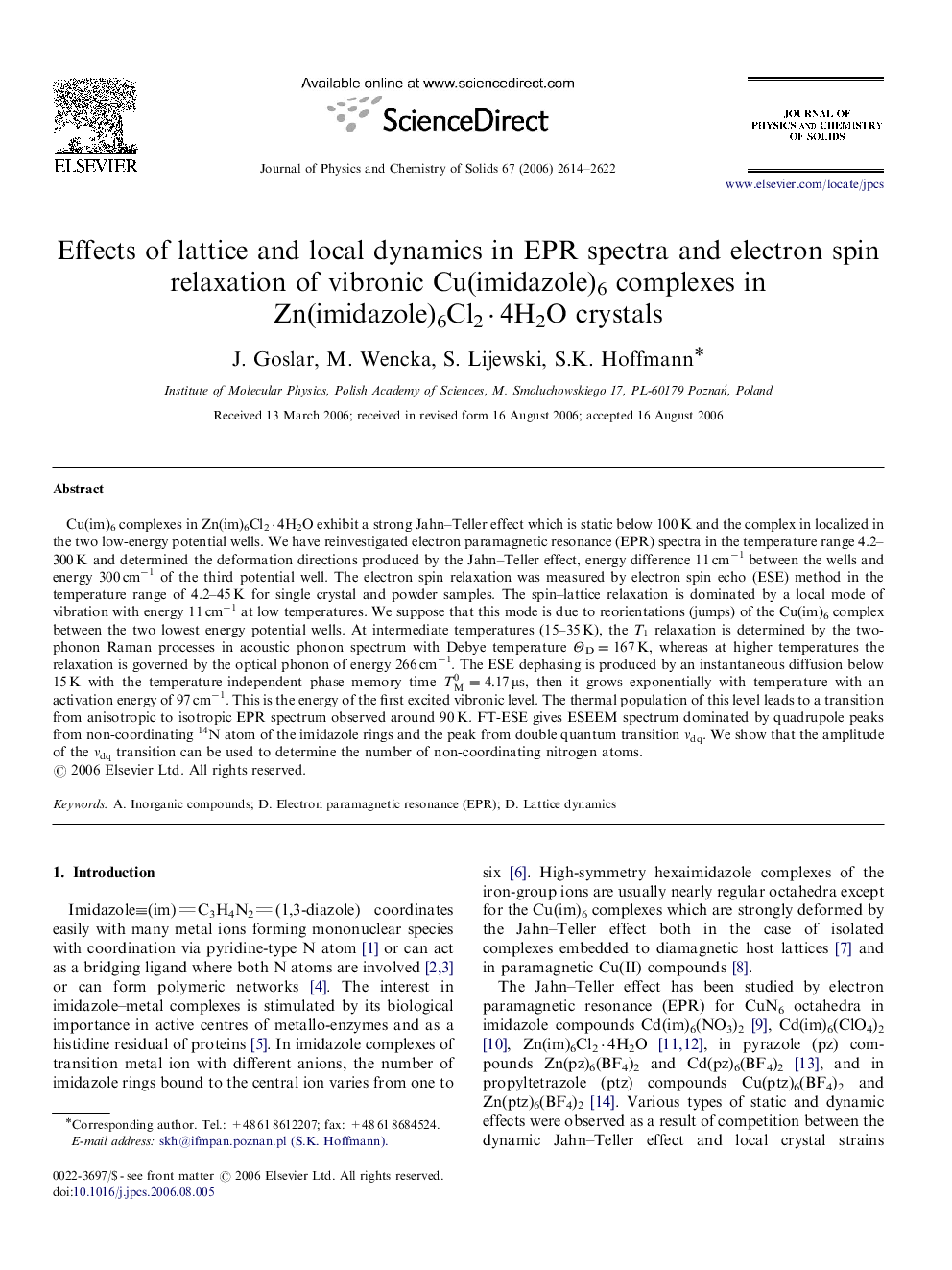| کد مقاله | کد نشریه | سال انتشار | مقاله انگلیسی | نسخه تمام متن |
|---|---|---|---|---|
| 1518697 | 1511622 | 2006 | 9 صفحه PDF | دانلود رایگان |

Cu(im)6 complexes in Zn(im)6Cl2·4H2O exhibit a strong Jahn–Teller effect which is static below 100 K and the complex in localized in the two low-energy potential wells. We have reinvestigated electron paramagnetic resonance (EPR) spectra in the temperature range 4.2–300 K and determined the deformation directions produced by the Jahn–Teller effect, energy difference 11 cm−1 between the wells and energy 300 cm−1 of the third potential well. The electron spin relaxation was measured by electron spin echo (ESE) method in the temperature range of 4.2–45 K for single crystal and powder samples. The spin–lattice relaxation is dominated by a local mode of vibration with energy 11 cm−1 at low temperatures. We suppose that this mode is due to reorientations (jumps) of the Cu(im)6 complex between the two lowest energy potential wells. At intermediate temperatures (15–35 K), the T1 relaxation is determined by the two-phonon Raman processes in acoustic phonon spectrum with Debye temperature ΘD=167 K, whereas at higher temperatures the relaxation is governed by the optical phonon of energy 266 cm−1. The ESE dephasing is produced by an instantaneous diffusion below 15 K with the temperature-independent phase memory time TM0=4.17μs, then it grows exponentially with temperature with an activation energy of 97 cm−1. This is the energy of the first excited vibronic level. The thermal population of this level leads to a transition from anisotropic to isotropic EPR spectrum observed around 90 K. FT-ESE gives ESEEM spectrum dominated by quadrupole peaks from non-coordinating 14N atom of the imidazole rings and the peak from double quantum transition νdq. We show that the amplitude of the νdq transition can be used to determine the number of non-coordinating nitrogen atoms.
Journal: Journal of Physics and Chemistry of Solids - Volume 67, Issue 12, December 2006, Pages 2614–2622